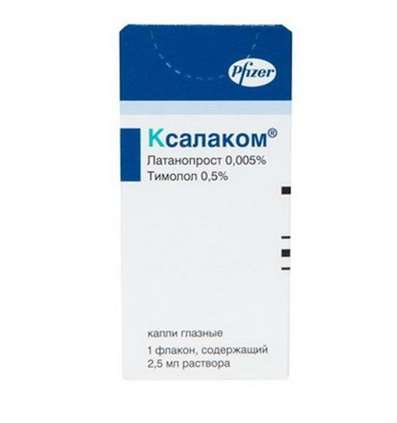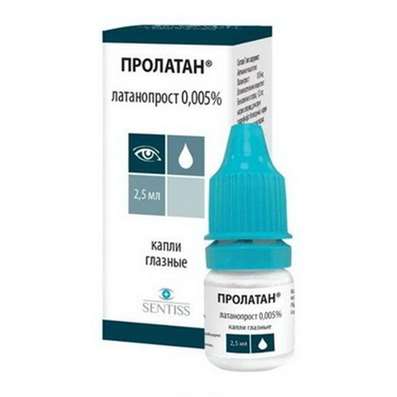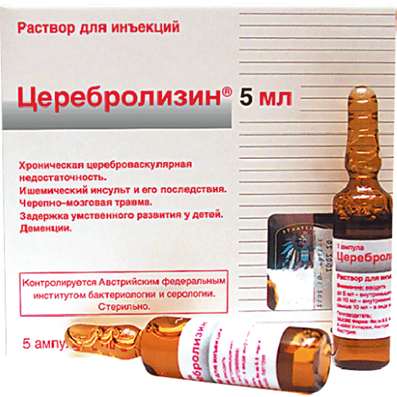Instruction for use: Rileptid
I want this, give me price
Dosage form: film-coated tablets
Active substance: Risperidone*
ATX
N05AX08 Risperidone
Pharmacological group:
Neuroleptics
The nosological classification (ICD-10)
F03 Dementia, unspecified: Degenerative dementia; Dementia; Dementia presenilnaya; Dementia senile; Primary degenerative dementia; Senile dementia; Senile dementia of the Alzheimer's type; Senile dementia; Syndromes of dementia; Dementia; Mixed Dementia; Mixed forms of dementia; Senile Dementia
F20 Schizophrenia: Schizophrenic conditions; Exacerbation of schizophrenia; Schizophrenia; Chronic schizophrenia; Dementia praecox; Bleuler's disease; Psychotic discordant; Dementia early; The febrile form of schizophrenia; Chronic schizophrenic disorder; Psychosis of the schizophrenic type; Acute form of schizophrenia; Acute schizophrenic disorder; Cerebral Organic Insufficiency in Schizophrenia; Acute attack of schizophrenia; Schizophrenic psychosis; Acute schizophrenia; Sluggish schizophrenia; Sluggish schizophrenia with apathoabulic disorders; Acute stage of schizophrenia with excitation
F22.0 Delusional Disorder: Delirium; Acute paranoid state; Othello Syndrome; Paranoid-hallucinatory state; Paranoid state; Paranoid delirium; paranoid psychosis; Paranoid delirium; Attack of delirium; The attack of polymorphic delirium; Psychotic disorder with a predominance of hallucinatory-paranoid symptoms and disorders of thinking; Anxious-delirious component; Anxiety and Paranoid Syndrome
F23.9 Acute and transient psychotic disorder, unspecified: Psychotic disorder; Somatized Mental Disorder; Acute psychotic disorder; Reactive psychosis
F30.1 Mania without psychotic symptoms
F30.2 Mania with psychotic symptoms: Delusional mania
F31.1 Bipolar affective disorder, current episode of mania without psychotic symptoms: Mania in bipolar disorders
F31.2 Bipolar affective disorder, current episode of mania with psychotic symptoms: Manic episode of bipolar disorder; Mania in bipolar disorders
F39 Mood disturbance [affective], unspecified: Affective disorder; Affective disorders; Dysphoric states; Dysphoric disorder; Psychoemotional Disorder; Affective disorders; Emotional-labile upset; Cyclotimic personality
F79 Mental retardation, unspecified: Mental retardation; Infantilism mental; Violation of mental activity; Oligophrenia; Lag behind mental development; Slowed development of intellectual abilities in children and adolescents; Delayed mental development in children; Maloumia; Oligopsihia; Mental failure; Impaired mental function; Lag behind in mental development; Lack of intellectual development in children; Lack of mental development in children; Mental retardation; Lack of mental development in children; Mental retardation
F91 Behavioral disorders: Juvenile and other behavioral disorders; Destructive behavior; Violation of behavior; Behavior Disorders; Mixed behavioral disorders; Behavioral Disorder; Behavioral disorder in adolescents with 15 years of age and adults; Violations in behavior; Behavioral disorders in childhood; Behavioral disorders in old age; Behavioral disorders in children; Behavior Disorder; Behavioral disorders in children
F99 Unspecified mental disorders: Psychosis in children; Mental disturbance; Violation of mental activity; Psychoses of childhood
R41.8.0 * Intellectual-mnestic disorders: Secondary impairments of mnestic functions; Difficulty concentrating; Difficulty of mental activity; Intellectual insufficiency; Intellectual-mnestic violation; Intellectual-mnestic disorder; Infantilism mental; Cognitive impairment; Intellectual disability; Breach of mnestic functions; Violation of mental activity; Thinking disorder; Impairment of mental performance; Dysfunction of mental function; Thinking disorders; The weakening of intellectual productivity; Lag behind mental development; Primary disorders of mnestic functions; Decrease in intellectual productivity; Decrease of intellectual-mnestic functions; Scattering; Mental Disorders; Disorder of thinking; Decreased intellectual productivity; Reduction of intellectual-mnestic functions; Decreased intellectual capacity; Decreased intellectual ability; Decreased intellectual abilities in elderly patients; Decreased mental function; Decreased memory in old age; Decreased mental activity; Decreased intellectual level; The deterioration of intellectual-mnestic functions; Chronic mental performance disorders
R45.1 Anxiety and agitation: Agitation; Anxiety; Explosive excitability; Internal stimulation; Excitability; Excitation; Excitation acute; Psychomotor agitation; Hyperexcitability; Motor excitement; Cessation of psychomotor agitation; Nervous excitement; Restlessness; Night trouble; Acute stage of schizophrenia with excitation; Acute mental agitation; Paroxysm of excitation; Overexcitation; Increased excitability; Increased nervous excitability; Increased emotional and cardiac excitability; Increased agitation; Mental arousal; Psychomotor agitation; Psychomotor agitation in psychoses; Psychomotor agitation of an epileptic nature; Psychomotor paroxysm; Psychomotor fit; Symptoms of excitation; Symptoms of psychomotor agitation; The state of agitation; A state of anxiety; Excitation status; A state of heightened concern; The state of psychomotor agitation; Conditions of anxiety; Excitation conditions; The state of excitement in somatic diseases; Excitation level; Feelings of anxiety; Emotional arousal
R45.4 Irritability and anger: Neurosis with increased irritability; Outbreaks of anger; Anger; Resentment; Increased irritability; Increased irritability of the nervous system; Irritability; Irritability with neuroses; Irritability in psychopathic disorders; Symptoms of irritability; Dysphoria
R45.6 Physical aggressiveness: Aggressiveness; Aggressive states; Aggressive state; Aggression; Aggressive behavior; Autoaggression
R45.8 Other symptoms and signs relating to the emotional state: State of confusion; Violation of the emotional-volitional sphere; Emotional disorders; Yearning; Lack of emotionality and avoidance of communication; Sense of anxiety; Autoaggression; Violations of the emotional-volitional sphere; Affective stupidity; Depressed mood with elements of anxiety
Composition
Tablets covered with a film membrane 1 tab.
active substance:
risperidone 1/2/3/4 mg
auxiliary substances: lactose monohydrate - 76 mg; MCC - 14 mg; corn starch - 27 mg; silicon dioxide colloidal anhydrous - 0,7 mg; magnesium stearate 1.9 mg; sodium lauryl sulfate 0.4 mg
film cover: Opadry-Y-1-7000 white / Opadry 03B220015 yellow / Opadry 03B21372 green / Opadry 03B21368 green (hypromellose - 3,125 / 3,125 / 3,125 / 3,125mg, titanium dioxide is 1.5625 / 1.54785 / 1.5332 / 1.416 mg, macrogol 400 0.3125 / 0.3125 / 0.3125 / 0.3125 mg, dye quinoline yellow aluminum lacquer (E104) 0 / 0.01465 / 0.0138 / 0.0691 mg, indigocarmine aluminum lacquer (E132) - 0/0 / 0.0155 / 0.0777 mg) - 5/5/5/5 mg
Pharmachologic effect
Pharmacological action - antipsychotic.
Dosing and Administration
Inside. Eating does not affect the absorption of the drug.
Stopping the drug is recommended to be carried out gradually. Acute withdrawal symptoms, including nausea, vomiting, sweating and insomnia, were very rare after a sharp discontinuation of high doses of antipsychotics.
Dosing regimen
Schizophrenia
Adults Rileptid® can be given once or twice a day. The initial dose of Rileptide® is 2 mg / day. On the second day, the dose can be increased to 4 mg / day. From this moment the dose can either be kept at the same level, or individually adjusted if necessary. Usually the optimal dose is 4-6 mg / day. In some cases, a slower dose increase and a lower initial and maintenance dose may be justified. Doses above 10 mg / day did not show higher efficacy compared with smaller doses and could cause extrapyramidal symptoms. Due to the fact that the safety of doses above 16 mg / day has not been studied, doses above this level should not be used.
Elderly patients are recommended an initial dose of 0.5 mg per reception twice a day. Dosage can individually be increased by 0.5 mg twice a day, up to 1-2 mg twice a day.
Children from 13 years to 17 years of age are recommended to take an initial dose of 0.5 mg once a day in the morning or evening. If necessary, the dosage can be increased at least after 24 hours by 0.5-1 mg per day to the recommended dose of 3 mg / day (with good tolerability). Despite the efficacy shown in the treatment of schizophrenia in adolescents at doses of 1-6 mg / day, no additional efficacy was seen at doses above 3 mg / day, and higher doses caused more side effects. The use of doses above 6 mg / day has not been studied.
Patients who have sustained drowsiness, it is recommended to take half the daily dose 2 times a day.
Manic episodes associated with bipolar disorder
For adults, the recommended initial dose of the drug is 2 mg per day at a time. If necessary, this dose can be increased at least 24 hours per 1 mg per day. For most patients, the optimal dose is 1-6 mg / day. The use of doses above 6 mg / day in patients with manic episodes has not been studied.
As for any other symptomatic therapy, the rationale for continuing treatment with Rileptid® should be regularly evaluated and confirmed.
Elderly patients are recommended an initial dose of 0.5 mg per reception twice a day. Dosage can individually be increased by 0.5 mg twice a day to 1-2 mg twice a day. Care should be taken in connection with the limited experience of the drug in elderly patients.
Children from 10 years are recommended an initial dose of 0.5 mg per reception once a day in the morning or in the evening. If necessary, the dosage can be increased at least after 24 hours by 0.5-1 mg per day to a recommended dose of 1-2.5 mg / day with good tolerability. Despite the efficacy shown in the treatment of manic episodes associated with bipolar disorder in children at doses of 0.5-6 mg / day, no additional efficacy was observed at doses above 2.5 mg / day, and higher doses caused more side effects. The use of doses above 6 mg / day has not been studied. Patients who have sustained drowsiness, it is recommended to take half the daily dose 2 times a day.
Continuous aggression in the structure of conduct disorder
Children from 5 to 18 years old
Patients with a body weight of 50 kg or more - the recommended initial dose of the drug - 0.5 mg once a day. If necessary, this dose can be increased by 0.5 mg per day, not more often than every other day. For most patients, the optimal dose is a dose of 1 mg per day. However, for some patients it is preferable to take 0.5 mg per day, while some require an increase in the dose to 1.5 mg per day.
Patients weighing less than 50 kg - the recommended initial dose of the drug - 0.25 mg once a day. If necessary, this dose can be increased by 0.25 mg per day, not more often than every other day. For most patients, the optimal dose is 0.5 mg per day. However, for some patients it is preferable to take 0.25 mg per day, while some require an increase in the dose to 0.75 mg per day.
As for any other symptomatic therapy, the rationale for continuing treatment with Rileptid® should be regularly evaluated and confirmed. Use in children under 5 years is not recommended due to lack of data.
Special patient groups
Patients with liver and kidney disease. In patients with kidney disease, the ability to excrete the active antipsychotic fraction is reduced compared to other patients. In patients with liver disease, there is an increased concentration of free fraction of risperidone in the blood plasma.
The initial and maintenance dose in accordance with the indications should be reduced 2 times, increasing the dose in patients with liver and kidney disease should be slower.
Rileptid® should be administered with caution in this category of patients.
Transition from therapy with other antipsychotic drugs. At the beginning of treatment with Rileptid® it is recommended to gradually abolish previous therapy if it is clinically justified. In this case, if patients are transferred from the treatment of depot forms of antipsychotics, then therapy with Rileptid® should be started instead of the next scheduled injection. Periodically, the need to continue the current therapy with antiparkinsonian drugs should be evaluated.
Release form
Film-coated tablets, 1 mg, 2 mg, 3 mg and 4 mg. For 10 tab. in a blister of PVC / PVDC / aluminum foil. 1, 2 or 6 bl. placed in a cardboard box.
Conditions of leave from pharmacies
On prescription.
Conditions for storage of Rileptid
At a temperature of no higher than 25 ° C.
Keep out of the reach of children.
Shelf life of the drug Rileptid
5 years.
Do not use after the expiry date printed on the package.

 Cart
Cart





